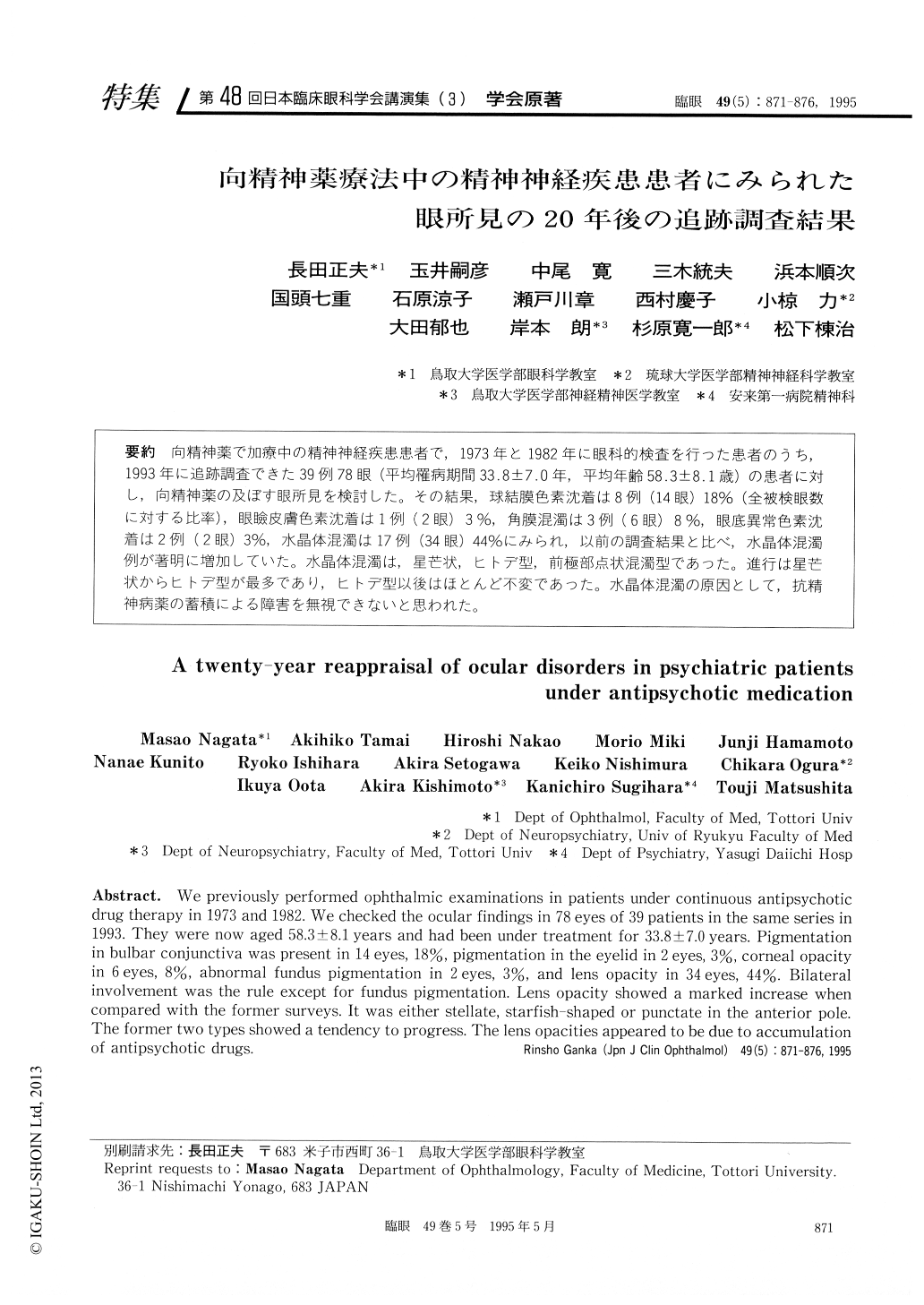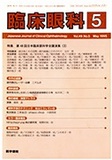Japanese
English
- 有料閲覧
- Abstract 文献概要
- 1ページ目 Look Inside
向精神薬で加療中の精神神経疾患患者で,1973年と1982年に眼科的検査を行った患者のうち,1993年に追跡調査できた39例78眼(平均罹病期間33.8±7.0年,平均年齢58.3±8.1歳)の患者に対し,向精神薬の及ぼす眼所見を検討した。その結果,球結膜色素沈着は8例(14眼)18%(全被検眼数に対する比率),眼瞼皮膚色素沈着は1例(2眼)3%,角膜混濁は3例(6眼)896,眼底異常色素沈着は2例(2眼)3%,水晶体混濁は17例(34眼)44%にみられ,以前の調査結果と比べ,水晶体混濁例が著明に増加していた。水晶体混濁は,星芒状,ヒトデ型,前極部点状混濁型であった。進行は星芒状からヒトデ型が最多であり,ヒトデ型以後はほとんど不変であった。水晶体混濁の原因として,抗精神病薬の蓄積による障害を無視できないと思われた。
We previously performed ophthalmic examinations in patients under continuous antipsychotic drug therapy in 1973 and 1982. We checked the ocular findings in 78 eyes of 39 patients in the same series in 1993. They were now aged 58.3±8.1 years and had been under treatment for 33.8±7.0 years. Pigmentation in bulbar conjunctiva was present in 14 eyes, 18%, pigmentation in the eyelid in 2 eyes, 3%, corneal opacity in 6 eyes, 8%, abnormal fundus pigmentation in 2 eyes, 3%, and lens opacity in 34 eyes, 44%. Bilateral involvement was the rule except for fundus pigmentation. Lens opacity showed a marked increase when compared with the former surveys. It was either stellate, starfish-shaped or punctate in the anterior pole. The former two types showed a tendency to progress. The lens opacities appeared to be due to accumulation of antipsychotic drugs.

Copyright © 1995, Igaku-Shoin Ltd. All rights reserved.


